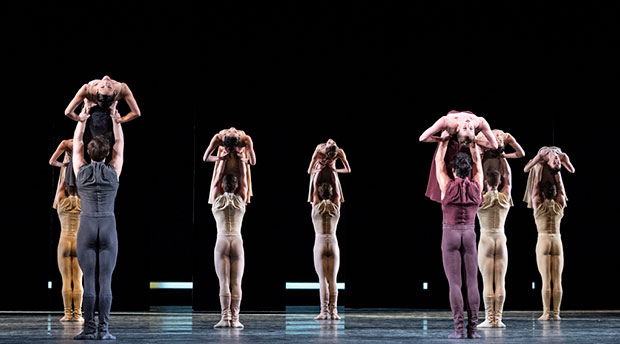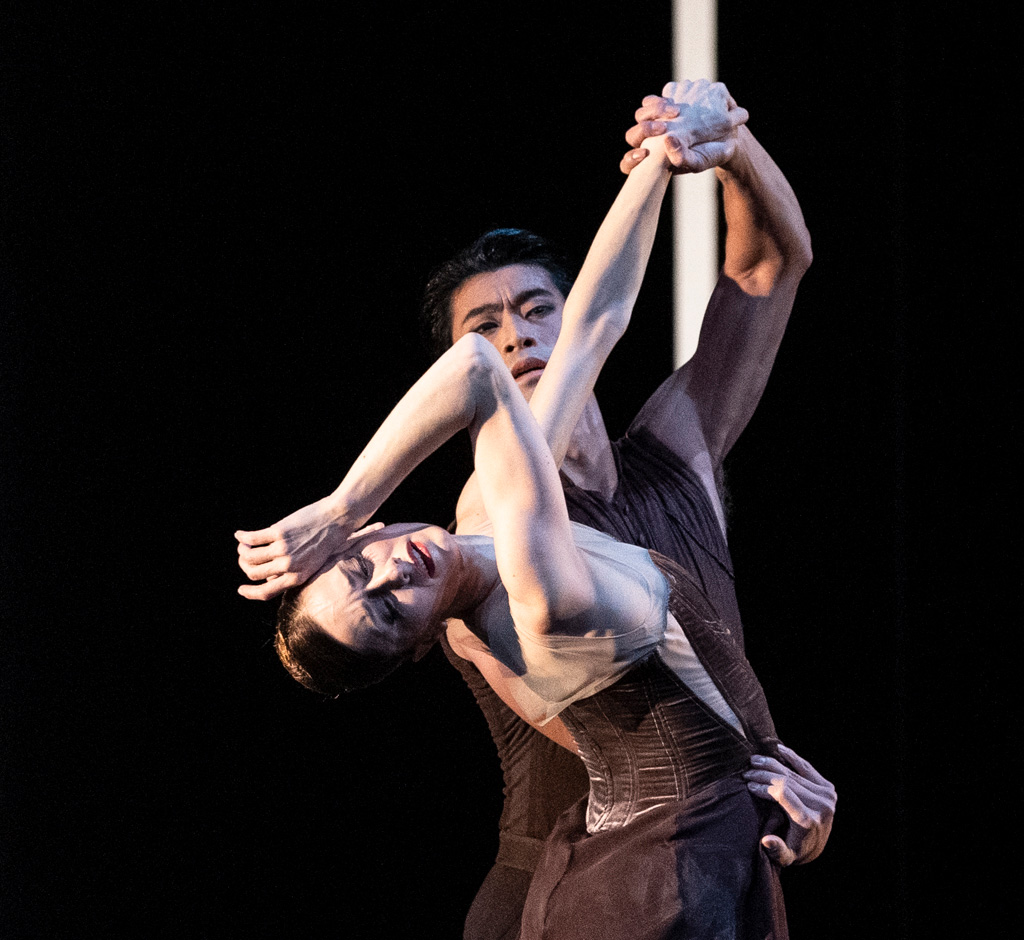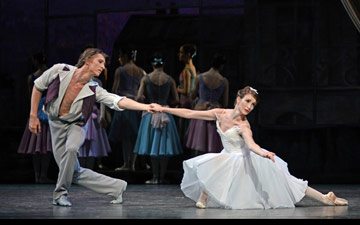
© Foteini Christofilopoulou, courtesy the Royal Opera House. (Click image for larger version)
Royal Ballet
Asphodel Meadows, The Two Pigeons
★★★★✰
London, Royal Opera House
18 January 2019
Gallery of pictures by Foteini Christofilopoulou
www.roh.org.uk
Liam Scarlett’s Asphodel Meadows has made a welcome return to the Opera House stage, reminding us exactly why his prodigious talent was given a main stage debut when the choreographer was just 24. This is only the second revival since 2010 (2011 was its last outing) but what impressed nine years ago, when there were perhaps those who raved because of his youth and relative inexperience, has not diminished in the intervening years. His outstanding qualities – his ability to express the musical nuances and his expansive dance vocabulary, has meant that this essentially abstract work, still speaks to us in a language that provokes all the right emotions. The choreography is so beautifully structured, aesthetically pleasing and inextricably linked to the music that when the curtain comes down there is a feeling of all the senses having been satiated.

© Foteini Christofilopoulou, courtesy the Royal Opera House. (Click image for larger version)
The title refers to a place in Greek mythology where ordinary people (neither particularly good nor evil) rest after death. Asphodel is a flower, pale and wispy, so one could imagine rolling fields inhabited by the spirits of rather average people. Yet somehow Scarlett’s ghostly souls appear extraordinary. Poulenc’s Concerto for 2 Pianos in D minor (brilliantly played by Robert Clark and Kate Shipway) dictates the mood, whether allegro or adagio, the rich textures of the music are echoed most effectively in the steps. Three main couples lead a corps of seven more couples – the patterns and shapes are all sumptuous arcs. Marianela Nuñez and Ryoichi Hirano embodied lyricism with Nuñez endlessly suspended or curled around his upper body. Just one minor, awkward landing from a lift rippled an otherwise seamless performance. Meaghan Grace Hinkis and Luca Acri sped through the final movement with alacrity but it was Laura Morera and William Bracewell who made an indelible impression in the second pas de deux. There is a moment when they stop and look at each other for what seems like minutes, as if they are truly seeing each other for the first time or they recognise and acknowledge a connection that has become sacred. The stillness fairly took one’s breath away, and this, amid luscious and fluid dancing, made them melt mellifluously into Poulenc’s yearning music. The closing moments of the ballet reach a suitably abrupt climax which seals the success of Scarlett’s invention – leaving us wanting more.

© Foteini Christofilopoulou, courtesy the Royal Opera House. (Click image for larger version)
Frederick Ashton’s delightful The Two Pigeons, created in 1961, never fails to bring a smile to its audiences. A simple love story, (boy gets led astray, but realises just in time, what he’s missing) in many ways this ballet epitomises Ashton’s style of movement: the use of épaulement, the speedy execution of intricate steps, the wonderfully elaborate storytelling within his dance vocabulary (in this case, arms like wings, feet that mimic the clipped gait of a grounded bird) and his sense of humour which is in evidence throughout. It looks its age, but for those of us that enjoy narrative ballet, it is a necessary indulgence. André Messager’s lively score does some of the work, relating the story with its sweet, memorable final pas de deux and its rousing themes at the gypsy camp. It may all be too saccharine for some, but there can be no doubting the fact that it sends us home feeling cheerful and charmed.

© Foteini Christofilopoulou, courtesy the Royal Opera House. (Click image for larger version)
As The Young Girl, Lauren Cuthbertson was thoroughly endearing. As on previous occasions, she imbues the role with self-deprecating humour, in fact her natural talent for unaffected comedy (so fabulously on show recently in The Concert), could not be better displayed than in this role. She has a sweet innocence about her that is neither under, nor over-played. Technically too, she relishes Ashton’s challenges. With Morera as her opponent, the flirty Gypsy Girl, the first act ‘competition’ between the two women was tremendous fun. Morera is also a gifted actress, dramatic and comedic, so the two of them made a superb double act. Ashton’s choreography can look deceptively straightforward – fast footwork is disguised with graceful upper body work. Morera doesn’t flinch, her innate musicality carrying her through. As The Young Man, Vadim Muntagirov gave us a character that elicited sympathy. His exceptional polish as a dancer is never less than admirable but ultimately it’s his honest and likeable interpretive abilities that make him so alluring in this role. One hopes that Kevin O’Hare will continue to include The Two Pigeons and works of this ilk in the repertoire when considering revivals. As companies necessarily evolve into an ever-increasing contemporary world, it is imperative to maintain the ability to execute traditional works to a high level – The Royal Ballet’s account of this one, is exemplary.
Jann Parry is currently away.

















You must be logged in to post a comment.